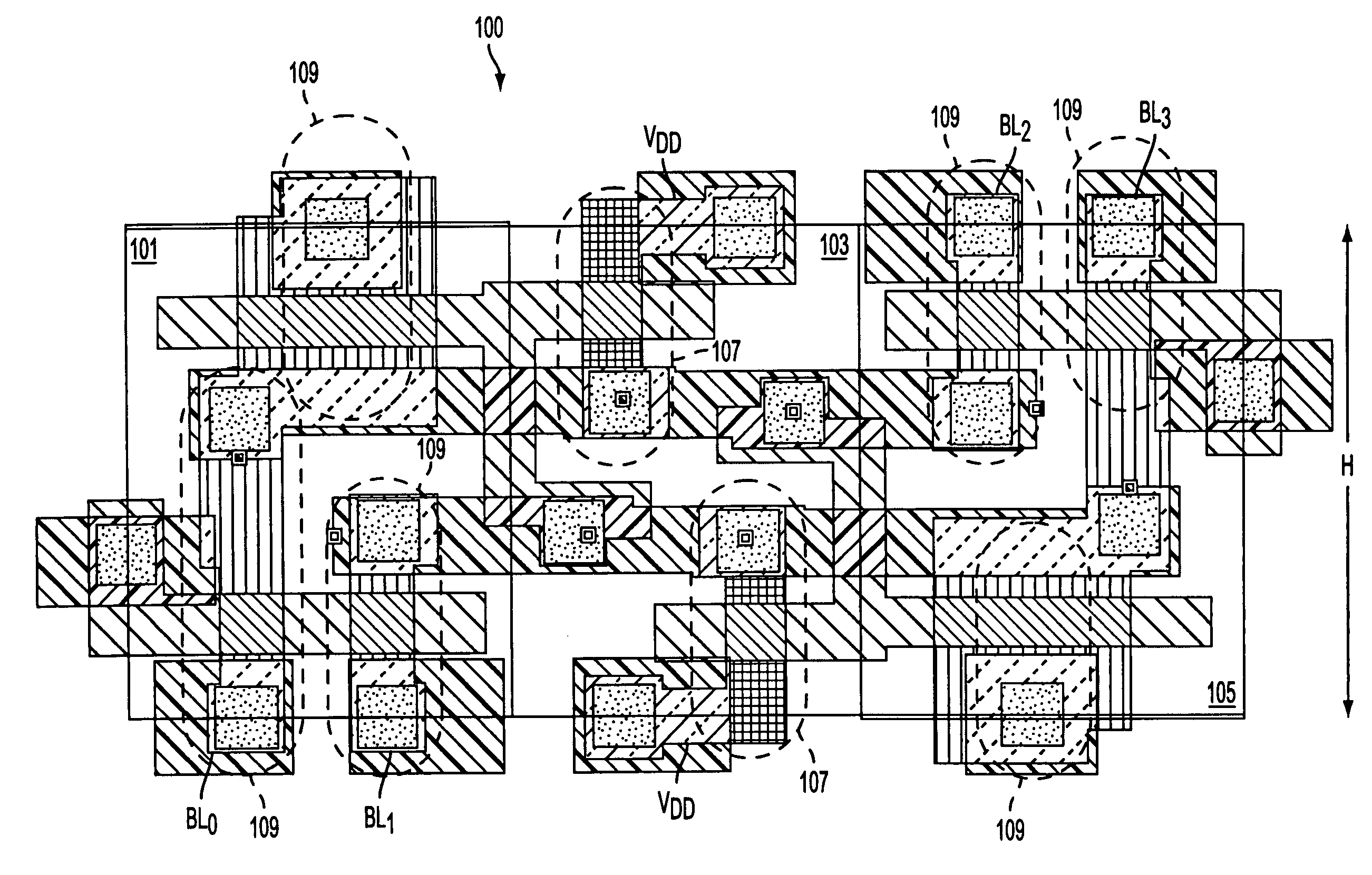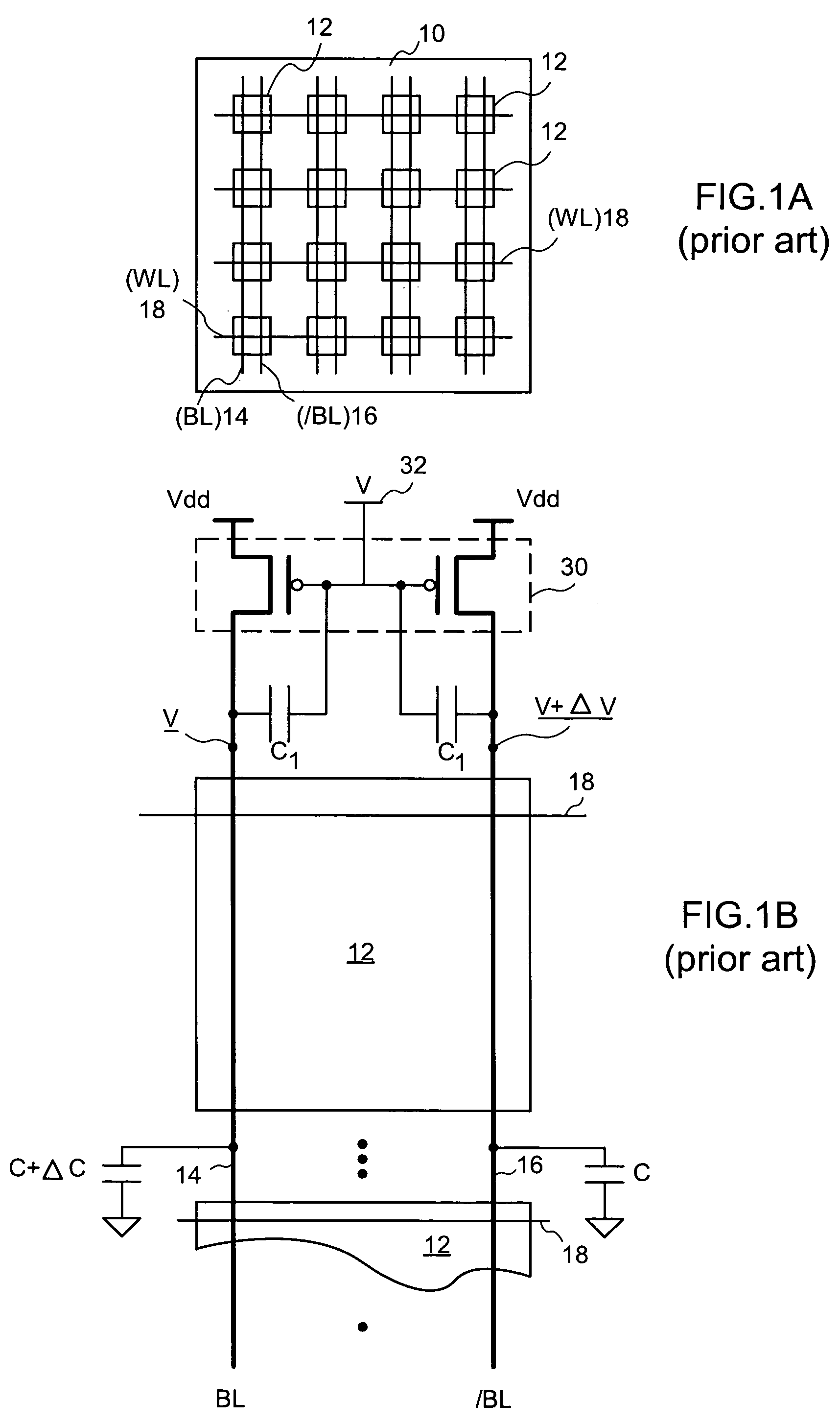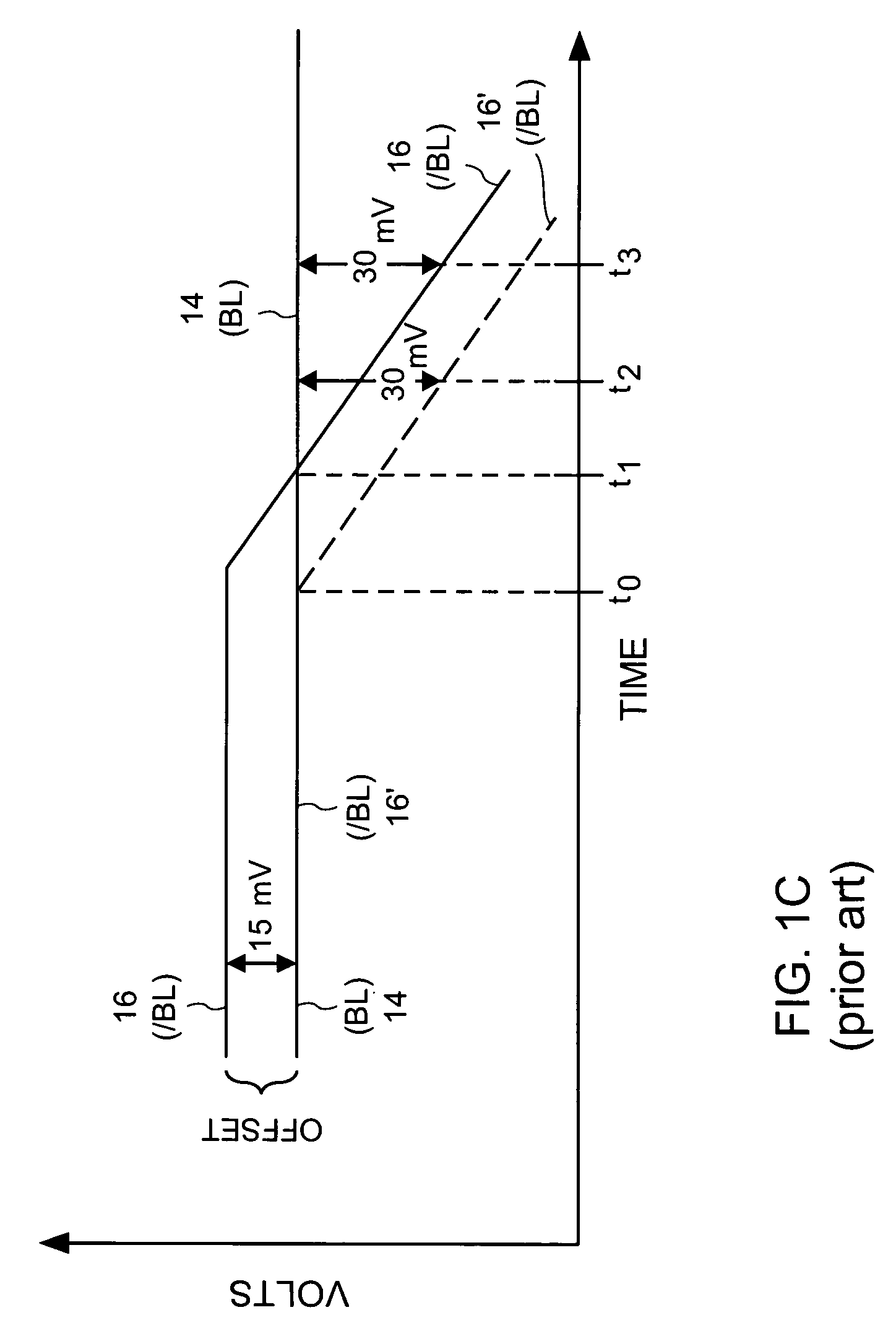Dual port memory core cell architecture with matched bit line capacitances
a dual-port memory core cell and capacitance matching technology, applied in the direction of digital storage, instruments, semiconductor devices, etc., can solve the problems of small voltage offsets with substantial performance deterioration ramifications, hammering the speed at which sense amplification may occur, and voltage offsets that become problemati
- Summary
- Abstract
- Description
- Claims
- Application Information
AI Technical Summary
Benefits of technology
Problems solved by technology
Method used
Image
Examples
Embodiment Construction
[0030]FIGS. 1a, 1b, 1c, 2, 3 and 4 have already been described and discussed as the relevant background to the present invention. They require no further discussion here.
[0031]In the following description, numerous specific details are set forth in order to provide a thorough understanding of the present invention. It will be understood, however, to one skilled in the art, that the present invention may be practiced without some or all of these specific details. In other instances, well known process operations have not been described in detail in order not to unnecessarily obscure the present invention.
[0032]FIG. 5 illustrates the final device layout of a core cell fabricated according to the first embodiment of the present invention. Core cell 100 is fabricated upon a substrate of first p-type substrate 101, first n-type substrate 103 and second p-type substrate 105. Two pmos transistors 107 are fabricated on substrate 103 and 6 nmos transistors 109 are fabricated on substrates 10...
PUM
 Login to View More
Login to View More Abstract
Description
Claims
Application Information
 Login to View More
Login to View More - R&D
- Intellectual Property
- Life Sciences
- Materials
- Tech Scout
- Unparalleled Data Quality
- Higher Quality Content
- 60% Fewer Hallucinations
Browse by: Latest US Patents, China's latest patents, Technical Efficacy Thesaurus, Application Domain, Technology Topic, Popular Technical Reports.
© 2025 PatSnap. All rights reserved.Legal|Privacy policy|Modern Slavery Act Transparency Statement|Sitemap|About US| Contact US: help@patsnap.com



